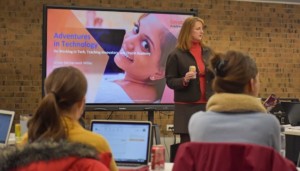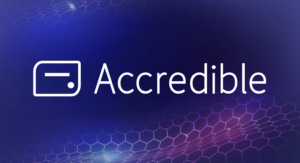Colleges Losing Their ROI
 Despite the Great Recession, many colleges and universities pretend they can cut costs and increase tuition and survive with a leaner version of the old model. Last week, the new president of Lewis & Clark defended the exclusive cadre of 58 universities that charge more than $50,000 in annual tuition in USA Today claiming the fuss was over blown given generous aid. University advisors tell them to trim some programs and some administration, scrounge for a little more aid, and hang on for better times. But there is no going back—there is no way to justify a $25,000 annual price tag (much less $50,000) for a string of keggers and lousy lectures. US News & World Report says in its annual survey of American colleges that: “If colleges were businesses, they would be ripe for hostile takeovers, complete with serious cost-cutting and painful reorganisations.”
Despite the Great Recession, many colleges and universities pretend they can cut costs and increase tuition and survive with a leaner version of the old model. Last week, the new president of Lewis & Clark defended the exclusive cadre of 58 universities that charge more than $50,000 in annual tuition in USA Today claiming the fuss was over blown given generous aid. University advisors tell them to trim some programs and some administration, scrounge for a little more aid, and hang on for better times. But there is no going back—there is no way to justify a $25,000 annual price tag (much less $50,000) for a string of keggers and lousy lectures. US News & World Report says in its annual survey of American colleges that: “If colleges were businesses, they would be ripe for hostile takeovers, complete with serious cost-cutting and painful reorganisations.”
Traditional colleges are feeling the heat but not ready to compete. They are not well positioned to improve their offering or their efficiency. The shift from auditorium to iPad is on. The new competition is cheap and getting better every year. It’s now possible for anyone to learn anything anywhere for free or close to it. Do-it-yourself learning is getting more sophisticated. Where certification is important, new cloud-based universities are virtual, portable, and personal. Over priced second tier universities will coast on reputation for a decade but will slowly lose enrollment. Third tier universities will shrink, close or sell to online operators.
With consumer demand for more flexibility, more value, and more engagement, higher education is rapidly becoming blended—a blend of online and onsite learning and a blend of multiple providers. About five million US students take at least one online course, more than one quarter of higher education participants. The survivors will make the switch from technology as a computer lab to school-as-a-service—a web of cloud-based applications delivered to multiple devices with ancillary physical services. Research-intensive universities such as MIT and Stanford University have been innovators in mobile web development. More than a third of sampled universities have begun using mobile web applications including maps, schedules, directory, and calendar of events. Survivors will personalize delivery, sweat outcomes, and drive efficiency.
In 1995, when Utah governor Mike Leavitt proposed an online university to his fellow western governors, they all jumped on board. Western Governors University was the first large-scale experiment with competency-based higher education. With Leavitt’s encouragement, his colleagues approved a university that used competencies rather than seat time to measure outcomes. TIME Magazine called WGU “the best relatively cheap university you’ve never heard of.” Some of us early board members thought the idea would revolutionize higher education (and then K-12). Competency-based progress is now common at online institutions but still has had little influence over brick and mortar universities. WGU was ahead of its time, but individual progress models will soon be common in K-12 and will eventually infiltrate higher education as online learning continues to grow.
The University of Southern California partnered with 2tor to develop a next generation teaching degree and MAT@USC, a maters in teaching online. Corporate partner 2tor supplied the tools, expertise, capital, and recruiting needed to successfully compete with first generation online programs. The new degree program, delivered online or onsite, incorporates video critique, video conferencing, and thick student support services from enrollment through graduation. Rather than coasting on brand, Dean Karen Symms Gallagher created a partnership that resulted in a next generation program preparing teachers for new learning environments.
The cost of higher education is spiraling out of control. It is squeezing middle class families out and making America less competitive. We pride ourselves on the best higher education in the world, but we’re coasting on the reputation of three dozen selective institutions. Most students pay too much, get too little, and half drop out. For students being priced out of the market, there are a growing number of cheap or free alternatives and many are personal digital learning options.
A growing number of high school students are earning college credit before graduation. Almost 800,000 U.S. students took at least one Advanced Placement course, or about 27% of graduates, and many of these receive college credit from the colleges that they attend. While it is surprisingly difficult to say for sure, there are probably almost as many students that take college courses while in high school. Dual enrollment programs allow students to take college courses that count toward their high school diploma as well as for college credit. The National Alliance of Concurrent Enrollment Partnerships promotes these often complicated institutional partnerships. Several hundred Early College high schools go a step further and make it a goal that all students should graduate with an Associate Degree as well as a high school diploma. Most high schools offer some college credit opportunities and something close to half of all graduates are taking advantage of free college credits.
Earning college credits in high school has become so common that it has become a problem for traditional colleges. Jay Mathews, a big advocate of college credit courses in high school, tells the story of a young man that shows up at college with a year of credit and didn’t know what to do with him. “All those extra credits, from AP or International Baccalaureate, don’t fit easily into the standard college schedule. Most of the colleges seem to throw up their hands.” Many high schools block dual enrollment (if it costs them money) and most colleges don’t want to take the credits (because the don’t want to lose the tuition). By making it easier to earn and use college credits, state legislators can significantly benefit middle class families.
After high school, a student can attend a community college for about $2,400 per year—about one third of a public four year and about one tenth the cost of a private four year university. The bad news is that a small minority graduate and go on to a four year degree. After spending the summer attacking private colleges (that on average have higher two year completion rates), it was good to see the White House focus on the terrible completion rate of community colleges in a summit hosted by Dr. Jill Biden.
A few new online colleges like Straighter Line offer an even cheaper do-it-yourself approach for $99 per month, or a freshman year for about $1000 plus textbooks. The problem with free and cheap college credits is transferability. Selective colleges don’t easily part with over priced tuition. Some state universities will take transfer credits, but it’s worth checking before investing time and money on low cost credits.
At a higher education executive forum today, I suggested that if you run a college and don’t have a ‘better and cheaper’ agenda, you’re going out of business. When anyone can learn anything anywhere for free or cheap, the ROI on U.S. higher ed is shrinking.
The president said he wants to be number one in college completion again. That will take better preparation and more dual enrollment career programs in high schools. It will take innovative completion- and placement-focused private colleges (yes, the kind White House is attacking; see counter attack covered by USA Today). It will take completion incentives for public colleges so that, like their private counterparts, they will focus on graduation as the goal.






Ed Jones
My question is what are all these colleges, bricks or no, teaching of value to the world?
Seriously, compare. My intense days on campus left me a broad and deep education. A good understanding of how the world (both natural and man-made) works.
Optics, thermodynamics and physical mechanics; accounting and capital asset pricing, organic chemistry, the physics of atoms, molecules, and particles; law; computational devices and strategies (to include artificial intelligence fundamentals and communications systems); a national security framework; economics.
If you're graduating today, and you're gonna be a leader or voter who thinks about issues like global warming, trade policy, war and/or nation building, it might be good to have some education in more than a couple of these. I'd argue that so doing takes a bit of pressure, immediacy, and intensity.
That's the democratic argument; the economic one is that we're not giving enough people the STEM knowledge to care for our aging population, reach out to a world in basic need, innovate in the era of nanotech and proteomics.
Instead, we obsess with media.
Peggy Noonan wrote after a round of commencement speeches that we are graduating a generation who all want “to go into communications”—yet have little to communicate, and less curiosity about how to get something worth communicating. She wrote that before Twitter.
So we all rebroadcast and retweet ideas we have no time or frameworks to think about. We have professional anti-homework activists who are cheered and empowered for their idea that we should ask even less work of our students.
Our laws get longer, with less power to achieve real good.
The problem for university administrators is that to offer "a ‘better and cheaper’ agenda", you have to have faculty who can deliver. A faculty who can hold students to do the tough mental work, and yet encourage them and make their studies easier and more efficient. A faculty you find...?